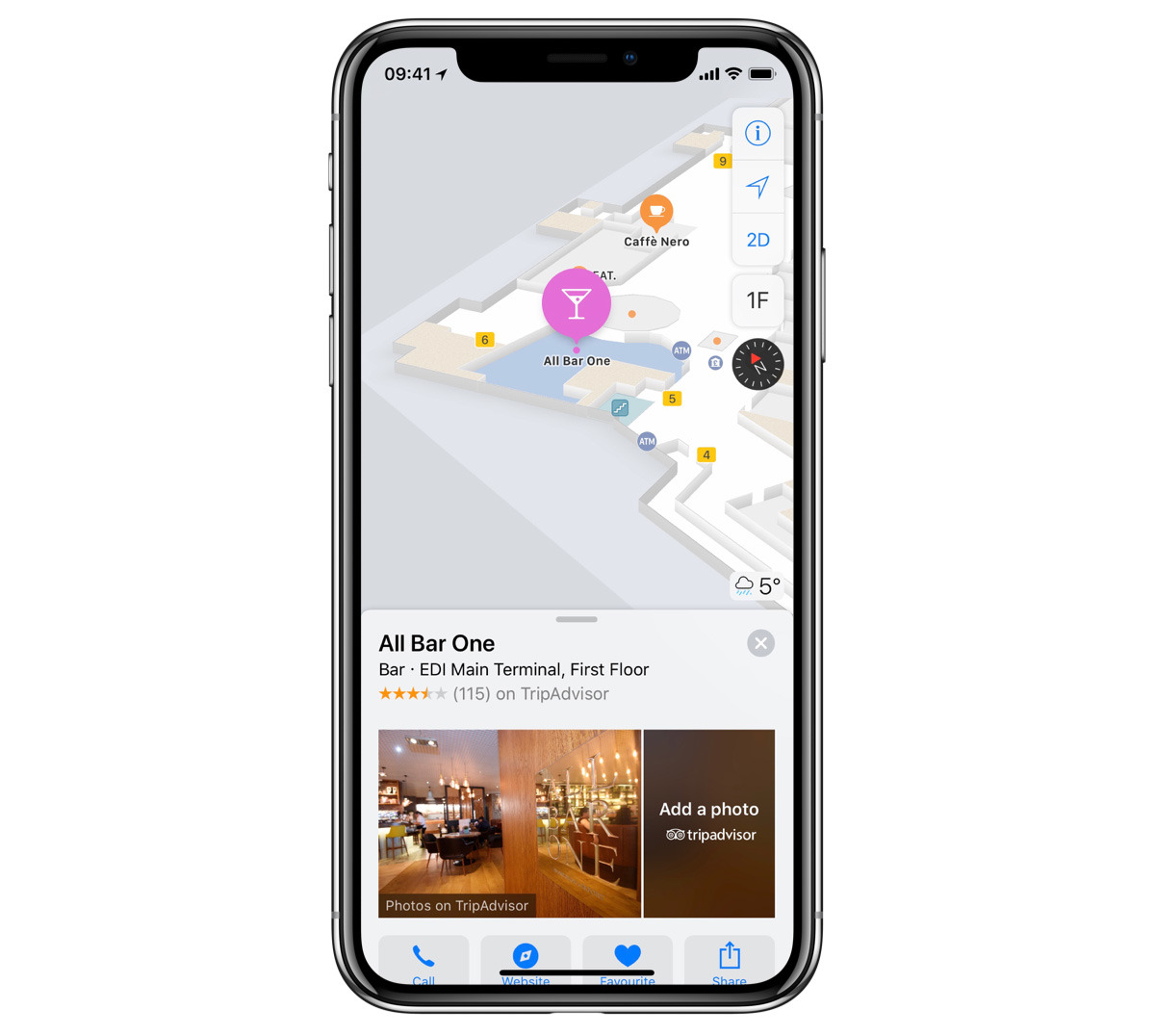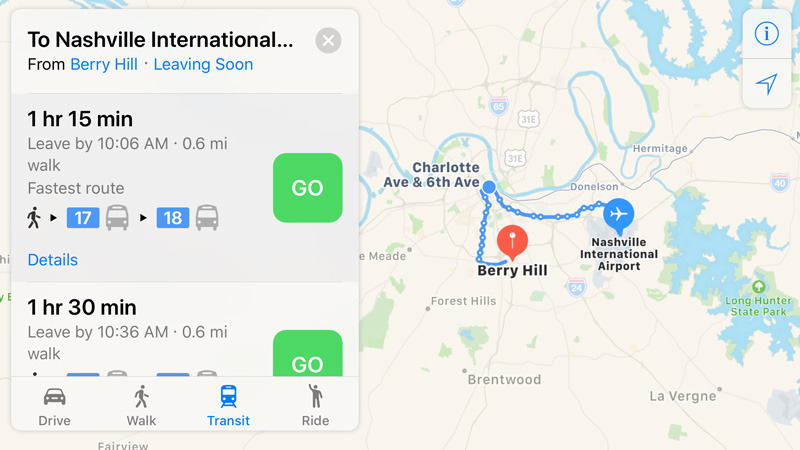Latest Apple Maps update includes indoor mapping for Sydney airport, more
Apple is ever-evolving the coverage of Maps features such as public transit directions, bringing them to more regions in the U.S. and abroad. Here's some of the latest additions, indicating the company's progress.
April 26
- Indoor airport maps for Edinburgh (EDI), Sydney International (SYD) & Hamad International (DOH) in Doha, Qatar
Apple's airport maps let people search for gates, bathrooms, security checkpoints, and other points of interest. Users can also get details on businesses operating in a terminal, and ask for on-foot navigation using Apple's indoor positioning technology.
April 17
- Lane guidance in Czech Republic, Finland, Hungary, Ireland & Poland
Lane guidance ensures that drivers find the proper lane for an upcoming turn or exit when using in-car navigation.
April 11
- Public transit for state of Tennessee (Nashville, Memphis, Knoxville, etc.)
Apple identifies transit routes by number, color, and/or service logo, and provides information on departure times, ETAs, and any walking required to get to a station.
April 2
- Statewide public transit for Arkansas, Ohio, Maryland & West Virginia
Apple Maps in its current incarnation originated in 2012, when the company decided to jettison all Google-related content from the iOS Maps app. The company was immediately hit with blowback, since the app not only lost Google's public transit directions but often contained missing or inaccurate data — so much so that some early adopters got dangerously lost.
Since then the company has solved most major problems, for instance restoring transit directions with 2015's iOS 9. Google Maps however, has much wider transit coverage if not as specific in areas, plus some features Apple lacks, such as Street View.
More recently, A months-long test of the three leading car navigation apps — Apple Maps, Google Maps, and Waze — found that Apple's software regularly overestimates trip times in an "intentionally conservative" manner, which may help drivers arrive on time or even early.
"If you want to get to your destination most quickly, use Google Maps," study executor Artur Grabowski said. "If you want an accurate prediction from your navigation app to help you arrive at your destination on time, use Apple Maps. If thinking you'll get to your destination quickly helps to ease your commuter anxiety, use Waze."
 Mikey Campbell
Mikey Campbell












 Wesley Hilliard
Wesley Hilliard
 Andrew Orr
Andrew Orr



 Amber Neely
Amber Neely

 William Gallagher
William Gallagher







